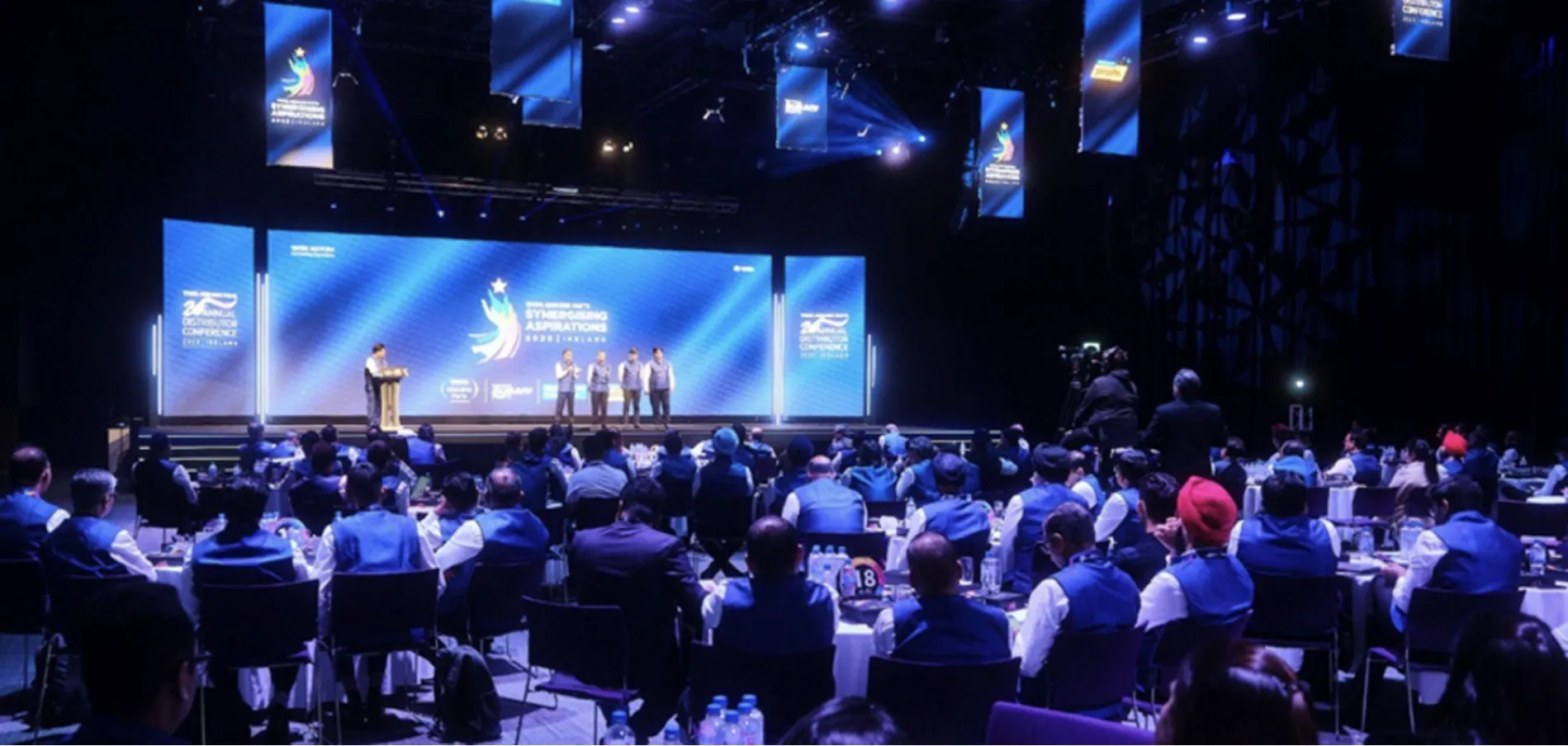Das Rush: So, Cameron has led talent initiatives at Citi for more than two decades. Currently, he's the head of learning and culture, where he leads the learning and culture teams, including overseeing their deployment of Valence's AI coach, Nadia. Lisa is the global head of leadership development at Novartis and has been an HR leader for 15-plus years now.
Okay, we're not counting, but if we were, maybe. And focused largely in healthcare, and you've had previous roles at AstraZeneca and Siemens Healthcare. And Diane is the former CHRO at IBM and first started using AI in 2011 to predict attrition, and that tool went on to get—or, sorry, not to predict attrition, as a replacement for HR business partners.
And that was a tool that went on to get 1.65 million inquiries a year. And we'll talk a little bit more—there's some even more impressive stats on that. So we're going to get into that, but today, you're a professor of business leadership at Harvard Business School, a board member, and senior advisor to a number of companies, including Kraft Heinz.
So, with those intros, welcome. Thank you for being here. And to kick off, I actually just want to do kind of a quick round robin, because change management can be this term that gets thrown around and can be kind of vague sometimes. So I'd just like to hear a little bit from each of you, like, when you think of change management and AI, what does that actually mean to you, and what do you see as the role for an HR leader?
Cameron, would you want to start and then we'll work our way over here?
Cameron Hedrick: Sure. Change management, HR, as it relates to AI, I think, first of all, it's contextual about what company you work in, because we all have equal access to most of these technologies in our personal lives, but we do not have equal access to it based on the company in which you work.
So I work at Citi. We are, understandably, cautious about how this works its way in and what we're doing. And so, there is a competition of sorts between your outside life and your inside-the-firm life that we're trying to manage. But the short version of the question is, first of all, we are trying to help people understand what it means generally, in the universe, how to negotiate what it might mean for your work, because people are understandably fearful, somewhat skeptical.
So we're talking about that proactively. And we're just moving these technologies into the firm very carefully in very limited ways. So, we're right at the beginning of our journey of adopting this inside the firm.
Das: And, Lisa, how about you?
Lisa Naylor: Well, I mean, maybe I'll say a controversial thing so we can have, like, a debate-y panel, but I mean, I think for me, it's no different than other kinds of change management.
I mean, I really think that when we think about this work, we need to understand what's valuable to people. You know, as practitioners, we can roll out the thing, we can make it available, but making it valuable, value add, is a whole different story. And I think for us, for change management, we really have to think about what is the value for people?
What are they going to do with it? What is it going to be for their work and for them? And then we have to figure out how to bring that to life.
Das: Wonderfully said. And, Diane, how about you? How are you thinking about change management and AI?
Diane Gherson: I'm going to be controversial too.
Das: Let's do it. Okay.
Diane: I think change management's dead. Okay? I think it's out of date. And I think we've learned that through a number of different changes we've just been through. Like, for example, return to work, right? So making a change and expecting to sort of gloss it up and make it good for people afterward isn't cutting it anymore, right? So, I think that the idea that really is working is creating a movement inside the company, around the change you want to make.
And that's certainly what we did at IBM. And we started by just attacking the things that bugged people the most in their employee experience and made it delightful using AI, right? And so, you know, if you were applying for time off, for example, you wouldn't have to go to a website and click on things and, you know, have to remember how many days you had left.
I mean, it would all be there for you, answering your questions, and so forth. Or if you wanted, if you were going to get a mortgage and you needed an employee verification letter, which was awful—sometimes the mortgage rate would go up by the time you got your approvals.
It was all done for you. Do you want us to write the cover letter for you? Blah, blah, blah. I mean, it all did it for you, right? So, it was done in three minutes. And so, that kind of thing made people not just curious, but excited about the promise of AI. So, I think you start with that movement. Then, you know, you've got to deal with issues of concern, like, for example, privacy.
I mean, we were getting a lot of employee data through our digital channels. And learning about engagement, you know, all of those kinds of things. Hotspots, they're useful, but also snooping. So, we had to come clean, right? And we had to explain, here's what we're going to look at, here's what we're not going to look at.
We're not going to look at email. But, you know, if it's an open Slack channel, all hands are in. And we're not looking at people individually, we're looking at trends. We're looking at highs and lows. So we explained what we were doing with their information, which is important to build trust.
The third thing is, we started with areas where we were upping the game of people as opposed to taking their work away, right? And of course, gen AI is just fantastic for that. The study that Brent mentioned, the Harvard study with BCG and others, have proven that there are some areas where it's just incredible, right?
So let's take customer service. 19% improvement in efficiency, but AI is more empathetic than humans. Why? Because we heard from Parker earlier about the amygdala. We get amygdala hijacks when someone's really rude to us, right? No matter who we are, we do. But fortunately, that doesn't happen to gen AI, right?
They can reframe the situation very calmly and deal with that irate customer. Well, that's great. If I'm a customer service agent and I'm being yelled at all day, right? So it actually improves my productivity in a way that actually makes me a little more sane, right? So, again, delighting people with improved productivity is really important.
And then, of course there are areas we've talked about, what Brent talked about, the Venn diagram. But there are areas where you're going to replace people's work. And there, it's really important to involve people. They are the experts on their work. And getting them to feel like, we're going to upskill you, if you want to be upskilled, if not, okay, the job's going to change.
But instead of making people feel like they own their job, having them feel like they own their skills. If you feel like you own your skills, then you want to keep upping them, right? And the job will change, the workflow will change. So, I would say those are sort of the four—work around that wheel of change that we did at IBM, and it was really quite effective.
Das: It's wonderful, because we've teased out some tensions, but I actually, at least for me, I'm hearing like a lot more agreement, and there's this theme that I feel like is coming out of, fundamentally, change management is taking something that is maybe a pain point to the organization, to employees, and turning into something that's more delightful.
Or, I think the way Brent kind of put it, of like, shaping the future we want, and change management is maybe that process by which we do it. I want to kind of go now, because Cameron and Lisa, I know that you both have some specific AI initiatives you are rolling out, and that, I think there's this tension you have to navigate between the parts of the organization that are kind of resisting.
Whether that's over, you know, security concerns or just employee resistance. And then there's the parts pulling you forward, so I'd love to just hear a little bit about what are your AI initiatives? And what are the things that are going well? And what are those real blockers that you're having to work through?
Cameron: Sure, so just a couple of examples of the initiatives. We've got a generative AI pilot related to writing performance reviews, which language models do exceptionally well. We are using, well, we're talking with Valence to get this product in as well. We are using language models to look into cultural matters and cultural measurements in ways that have heretofore been unavailable to us. So those are some examples of the initiatives.
But as you said the headwinds are manifold, and some of which you've talked about. There are privacy concerns. There are security concerns, and the list is very long. And it's easy to kind of, for me, to be very frustrated with this, but if you work at Citi, and you make a mistake in these areas, info security, for example, the world's economy comes grinding. The consequences are not small.
So we are just treading that middle ground as best we can, right on the knife edge. Because there's true competitive advantage that comes with it as well. But we're not alone in finance trying to navigate that. So those are a couple of examples of the headwinds and the tailwinds.
Lisa: Yeah, I mean, obviously, we put AI in lots of different places, I think, at Novartis, when we look at some of the work we need to do all the way from the science. But, for today, if I just kind of hone in on the things that we're doing with our people and some of this work, we have, I think, the difference between the AI that people know about, the AI that's in the background, and then the AI that they kind of feel.
And so we have various tools that sit in the background, which is really kind of looking at how you engage some of the things that we do with global products and match and other things where it's really helping people think through their careers and their development and grab skills and really curate the way that they engage in a lot of different things, which is where we see a lot of value.
We are a very large company, and it's easy for people to not understand how to navigate the system. And we find that there are methods in use for AI where it helps people just kind of grab and gather data in ways that maybe they didn't think about.
Really specifically, we're leaning into some work that we're doing with leaders. I mean, if you go around and ask people, are you a great leader? A lot of them are going to go, “of course I am,” but is the reality, are they? I'm not sure, in all of the moments. I mean, I'm very sure, but I'm being kind. So I think, you know, the thing for us is, we're putting tools in to make the work of your team more discussable.
So we have some partnership with Valence where we're really thinking about how do you have people with insight into who they are? How do we then bring that insight into your team? And then now we're starting to lean into things like Nadia and finding people in the moments they need it most. And I think this is kind of that different trigger when we talk about the use and the application of AI.
Do people go out and find it when they need it? Or how do we bring it to them in the moments that they're already challenged with and then really enhance the use? And so this has been the place for us. We've almost gotten kind of a viral-level pickup of some of these tools because people are realizing, “gosh, it was a little bit hard for me to figure out on my own, but with just some of these more discussable, accessible ways of thinking, then now I'm more interested in it.”
And, you know, you get like one interested friend, and then they tell another and really kind of picks up in a way to help our leaders. And maybe in a way that, if we had asked them a few months ago, they wouldn't have articulated they even needed it on their own.
Cameron: Just one other thing that'll be interesting for this audience, and it builds on your first question and involving people in the journey. But one of the things we're exploring is we're very interested in understanding the skill profile of each individual. Do they have it and how good is it? And everybody in this room has wanted that, and you've asked for it, and you've tried to have them explain it to you, and that is like pushing a rock up a hill.
But we have the opportunity now to do this passively, to infer these types of things with much greater accuracy and much greater dynamism. And that is going to be terrific, because now we can manage our skill portfolio just like I manage a real estate portfolio or any other asset that we have.
But that is a scary thing for some people, like, what are you going to be using that for? How are you getting that? Is that going to be a performance management thing? So that's the next frontier that we're really thinking a lot about too.
Diane: That's actually something we did at IBM really early on. We used AI to infer people's skills from their digital footprint.
And we did that around, I want to say, 2011, 2012, and at first we were afraid to ask for validation. We were using sort of skills councils and what does “best” look like, and all that kind of thing. But, actually, over time, we realized that the only thing you can do is ask for validation, and it's actually now up to 96%.
And people are positive about it, but we were scared at first. We thought, “oh my god, what if we got it wrong, and what if we're going to get into endless debates?” It's a whole lot better than the previous version, which, of course, was all manual. But it is really important, and I think it's so important that I actually sit on the board of one of the companies that does skills inference, TechWolf, because I just think it's critical to this whole wave of introducing AI, and there's been, I think—a few companies have tried and not succeeded at doing it.
So it is, I think, just foundational. I totally agree with you, Cameron.
Lisa: Yeah, I do think there's this, and maybe it goes to where we started on these elements of change management, is when we come and we talk to people about the thing, right, here's the thing you're going to have, but they're not sure to what value is that. For me, I think this is the place we've seen this unlock, when we can help people understand, hey, when we asked you, how's development going or what does your career look like? And they're really struggling. We then talk about the outcome instead of the moment, right? So I think this is what's really where we find the value.
And we're talking to the business and we're talking about next stages. And should we do this and why? We're not talking about, it's cool or everybody else is doing it. What we're talking about is, this is a unique challenge and this is where we think it's going to accelerate something for us, right?
We heard this at the start of our time today, engagement and people and value and belonging and connection. All of those things are kind of opened up with some of these opportunities that we've seen with AI and the tools and the partnerships they create in the organization. Look, I mean, I always say, when I walk in the grocery store and they change it all up, I'm super annoyed that day because I don't know where anything is and it feels uncomfortable and it's new, and then two weeks later I don't notice anymore, right?
And we have some of that too, is this just kind of, how do we get past the initial “newness” or the worry and kind of drive people to the next levels of understanding, and I think that's really the trick we've seen.
Das: Yeah, I think this is a great frame, and we sort of already in this kind of first half here, started to tease out, fundamentally, and we call this, you know, from fear to curiosity, because you've got all these things that really represent the fear, whether that's the fear on your technical teams around security and privacy, or it's an individual's fear in trying something new that you have to overcome with this, like, momentum of value and these new things that are being unlocked with these new capabilities.
And, like, Lisa, I think you in particular really highlighted this kind of bottom-up adoption or this kind of organic adoption, and I'm guessing a lot of people in the room have had the experience of trying to mandate a top-down initiative, and that rarely goes well for change management versus how easy it can be when individuals see the value, when employees start telling one another.
So how have you, you know, in various initiatives, been able to generate that kind of bottom-up excitement that just makes change management so much easier?
Diane: Well, a Shark Tank kind of contest—so across the whole company, give us some examples of, you know, what you'd like us to work on, what you would like to work on with us with AI, and that started it, I think. I think that the second thing is your point about top-down, that it has to start at the top that we're all learning, right? You can't have know-it-all senior leaders saying, “you guys go do your learning, right? And these skills are important for you.” It's more about, “I'm taking the learning with you.” So our CEO actually held a monthly learning session, and she'd interview different people and ask a lot of questions, a little like Oprah.
But with them, we all went through learning and got certified, whether it was cloud, AI, whatever it was. But the whole idea was we're developing those skills. So very senior leaders would be having town halls and go, “oh my god, that third module of AI was a killer. I failed the test three times, and I wanted to throw my laptop out the window.” And everyone was like, “oh my god, well, if he's doing it, then maybe I should be doing it.” So there's this sense of we're all learning together.
Lisa: There is something, right, about what people talk about, what people are interested in. And, I mean, we have this pleasure in that we are thinking differently about AI in lots of different facets, right?
So we're not only trying to talk about it in one space. We know that there's something special in the service of science and other things. So I do also think there's how it gets articulated. So, inside of our own company, we often talk about this as, look, this isn't about replacing people. We sometimes say it's like an Iron Man type of kind of energy, which is, you already have something strong, and then how do you enhance it or accelerate the value?
So, I think this has been something big. I mean, at the most basic level, we're just meeting people in the scaffolding of the problems that they already have. So, we're not trying to find a moment, right? We're saying, we already know this. We hear this from you, and we have this idea that you may want to try.
Look, there's always people in there who are like, no, thanks. You know, I'm not interested. And then we use all of our best skills, a little competition, a little cooperation, a little something to say, well, oh, that's cool. But Joey Schmutz over here thought it was great. So I think it's also about how we talk about it, but I think simpler is better in a lot of ways.
And really figuring out the use case and the value is where we've been spending our energy. But we have, as you said, like some viral pickup on things that have just been about meeting people in those problems.
Diane: A couple of things though, I just want to say, we did replace people, right? So, it sounds like you didn't.
In our case, we said, look, take payroll. You know, our attrition rate is 14%. We're not going to replace that 14%. You've all got jobs, but the 14% that leave, they're not going to get replaced. So we were very clear about what the situation was, but the jobs are going to change.
You'll need to upskill. And everyone understood what skills they needed to learn in order to now do the higher-level pattern finding instead of the reconciliations that they were doing before. So I think there is a need for clarity around that. I think the second thing is, you’ve got to link learning with career.
So, in our personalized learning system, it would say, congratulations, Diane, you just passed this certification. Do you want to apply for any of these five jobs that have openings? You have a 90% match. And so there was this immediate gratification that you got as you went through your learning that you were now eligible for certain jobs that maybe you'd never even thought about.
Lisa: The value of being honest, though, that's super important, right? Just talking about what we're doing and what we're not doing, because I think it goes to your point about what's new and what's fear, and let's just be open about what we're doing and then how people can find their way in it.
Das: I want to come back to this idea of simple communication, but, Cameron, I'd love to hear from you.
Cameron: Yeah, listen, I think part of my job is to create the conditions for the things to happen that I hope happen at the firm, which is a very easy sentence to say. But the doing of that is very difficult. This is grossly oversimplified, but I kind of think of it in two buckets: bucket number one is to find the human and predispose the human and equip the human, absent any other trammeling force, to do the thing, right?
So this is overcoming fear, it's in skills, and the like. And that's hard enough. But then there's, like, human in the context of the firm, which is a much different matter. So does everything in your firm, the compensation systems, your rating systems, your promotion systems, does it align with—does it reward the thing that you want?
So very practically, right now at my firm, I can drop the person who's predisposed to innovation and using generative AI in the system, but the system is not built for that human to thrive. So, systems alignment and harmony is the big part of my job, at least on this particular topic.
Das Rush: Yeah, and I'm being kind of cognizant of time, and I know that you've all had some experience with Nadia, with AI coaches.
What has kind of been the role of that in helping with change management? Because obviously part of an AI coach is, you know, leadership development, work coaching, so how do you think about using something like a tool, like an AI coach, to help bring employees along on that journey, and has that been helpful?
Cameron: We have not done it yet at Citi. Conceptually, I'm in. In my personal life, I've done it and created my own agents and things like that. But right now, it's a concept. So I don't have applied experience, but I hope to.
Das: Yeah. Lisa, I know you've had a bit of experience, too.
Lisa: Yeah, I think we're just getting started and picking up speed, and it's also, for us, we're just looking at this kind of the whole continuum.
What do people need at different times? And we're just holding this belief that, you know, sometimes you have this moment, this need, and it's short. It's the, “oh, I just wish someone could think through this with me,” and it's just fleeting, and it kind of gets lost into the rest of your day. And so, we're really trying to plug that in, and in the moments that people need it, I think, which is kind of on brand to some of the other things I've said. But we'll have to, like, see you at the next—we'll have to see you at the next one to talk about where it went wrong and where we really picked it up as part of application.
Diane: And I just have to say, I know Eric Erickson is down there somewhere in your Valence system. And that's where they start, right? Is putting yourself in the shoes of the other person, asking those kinds of questions. I'm sure, I haven't used Valence, but I'm sure that's what it does. Eric Erickson is just brilliant, but not all of us can be as good as him, but Nadia will be.
Das: Yeah, like, sometimes just having that—you know, I think the point you made earlier about not having the amygdala hijacking, having something there that's just going to be a calm presence while you're working through that fear, going to your curiosity.
I want to come back to a point that you made, though. I think you all made it, but I really heard it in kind of what you were saying—communication just needs to be simple, like you need to help people understand what this is, because that's really the starting point of the shifting. How have you gone about communicating the value of AI or what you're doing both to employees and maybe particularly to the resistant parts of the organization?
Lisa: I mean, we have a pretty nerdy organization and that works on our behalf sometimes. I mean, people are really invested in understanding the value to a lot of different moments and kind of in the work that they're doing. But I think for us, what we're looking at is helping people to understand that we can increase and advance the way that they use their time during the day.
So we already have some of this, right, in partnerships we have with Copilot and Microsoft. People are seeing that in just some of the simple use cases of their work. And of course, the people who have personal application, right? They know and understand what they do. And so, for us, it's just about showing them that, “hey, did you feel a little uncomfortable when you had to sit with your team and you had to figure out how it was going? Well, actually we can make that way more discussable for you. And here's the tool to help you figure that out.”
And that's some of the partnership that we've already seen with Valence, right? So, for us, it's rank. It's not a big thing. It's not a big moment, a big brand, a big name, is to just say, look, we recognize we're in a moment in time of strategy shift or a challenging something, or the world is hard.
And guess what? As a leader, you have to hold that space. And so, how do we help you figure it out? And so, that's really where we come and we introduce it, is to say to people, “look, you're going to do this thing anyway. And so it can either be a little bit weird and clunky, or we can help you get the best discussion, and here are some of the ways that you can think about it.”
And so, by doing that and then following some of the data we already have, and just saying, hey, this is what people say, or we nudge in and say, “hey, when we look at the last couple of X and Y data points, this is where you are. So we have this idea and it might help you. Are you interested?” Is, again, just trying to find them right in the moment they need it to support.
Das: Anything you want to add there? No? Okay. Great. I'm kind of curious in particular on this idea of sort of the partners you need to work with, whether they're your CTO or your chief data officer, and I know, Cameron, you in particular face these kind of headwinds.
What is the communication like there, and how are you finding, like, the ability to kind of communicate the value even with—and mitigate those risks?
Cameron: Well, early on, some of you know Ethan Mollick, and we brought him in and talked to our seniors and the board just to show what the possibilities were. So, I think at the most senior levels, people get it, alright?
I really do think they do. I also don't think this is the type of thing that needs to be born, bred, and run inside the CTO office. This is more of an HR thing, in my view, but I'm biased, so you need to discount that a lot. But to your point, like the headwinds for us, anyway, have not really been tech.
Well, it's been info security number one, privacy number two and just really understanding what this is. What are we going to let loose on our data sets? You know, what are the vulnerabilities that creates? We're moving through that now, finally. So now, we're moving into some of the—they're not esoteric at all, I mean, in the universe of things, but we're moving from that to some more navigable things. But it's never been selling the promise of it or the functionality of it or what it can do. It's just how can we get it through safely and responsibly?
Das: Yeah. Like finding enterprise-grade tools.
Cameron: That's exactly right.
Das: We've got time here for one last question. And so, I think the question I want to ask, because this is a fast-moving space, and we're talking about change management and that's really envisioning what you want the future to be. So 12 months from now, if we're back here, we're sitting in these same seats, where do you hope you are with AI in your organization?
Lisa: Well, I mean, I hope people are telling stories of, it helped me be better at the thing I was doing. And ultimately, that's what we're after in a lot of spaces, whether it's an application in science, whether it's helping us, you know, think through a vacation and leveraging AI.
I think, ultimately, what we're trying to do is find the stories where people say, “I was kind of two or three steps better than the place that I started,” and, yeah, I think most in play.
Cameron: This may not seem ambitious enough, but weighing all the factors I have to weigh, what can I do safely and penetrate, you know, in 12 months. I think the performance review use case is good.
I think the culture measurement use case is good. We have a comparison of three or four documents together, summarize meetings, Copilot. That's good. Just get that out at scale in 12 months. That would be a victory.
Das: And, Diane, I know you're not actively, but you are advising. So, where do you hope to see the companies you're working with go from where they are now to 12 months from now?
Diane: Well, look, I mean, I do think it's important that people feel delighted by AI and not intimidated by it. And so, they've had to have had some of those early, delightful experiences, and they've had that, then we're in right. We saw that happen with digitization where, in the consumer world, you know, people were delighted by the fact that Amazon knew who they were, and all this kind of stuff, but their companies were way behind, “dear employee” letters were going out.
And we caught up as corporations, but it took us longer than the consumer platforms. I think it would be such a win for HR, because I agree with you, HR is leading this. It would be such a win for HR to be as delightful, if not more delightful, than the consumer platforms are as an experience.
Das: Oh, I love that as a goal for everybody. Next 12 months, HR can compete with the customer-facing things, and let's see if we can do more delightful employee experiences than customer. That's awesome. Hopefully both are, but I love that little internal competition. Great note to end on.
Cameron, Lisa, Diane, thank you so much for coming here. I really appreciate it. And with that, if we can get a round of applause.
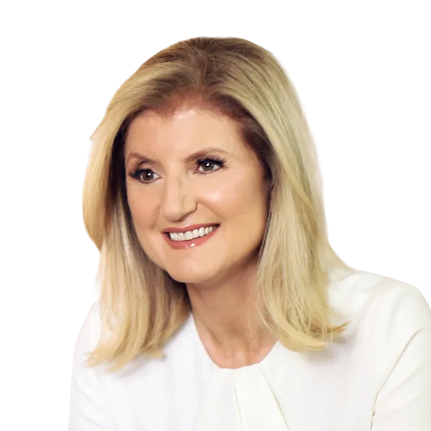



.png)


.png)










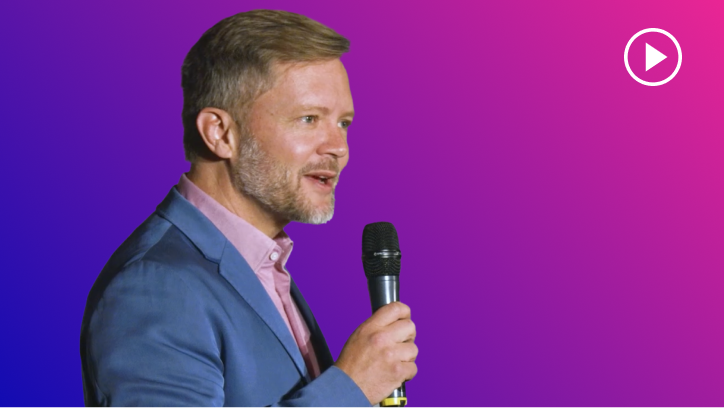

.png)


.png)



.jpg)







.png)






























